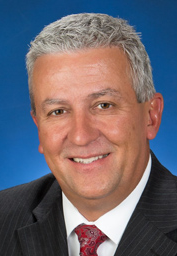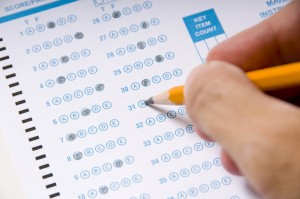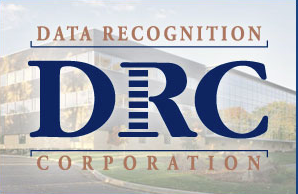What’s an EMO? What’s a Non-profit?
Public education is supported by taxpayer dollars. This is something we can all agree on, right? Well, sort of. Noting this fact and fully understanding its implications are two very different things. How do tax dollars support public education? How does spending occur?
To answer those questions, let’s first try to gain a little insight into the types of public school in existence today.
The public school landscape has grown. Public schools used to be only those brick-and-mortar institutions set up to serve individual districts across the state. Depending on the district in which you live, your child/children attend school for free because your taxes are paying for it. Today, public education is still provided through traditional brick-and-mortar school districts. But the School Choice Movement has added charter schools and cyber charter schools to the equation.
Now, let’s examine organizational structure.
Public schools are organized to operate as non-profit organizations, serving a population of students at no additional cost to the student (or student’s parents). In addition to receiving tax dollars, the state allocates additional funds to help schools deliver educational needs.
The designation as a “non-profit organization” implies that the organization will use surplus revenues to support and drive operations, instead of distributing profits out to shareholders or other groups (Wikipedia, 2013). This is because non-profit organizations are structured specifically to benefit some group of constituents. Spending, budgeting, and accountability are all outlined and justified to serve the public domain.
On the other hand, a for-profit organization is built to trade goods and/or services for the sole purpose of generating profit. These organizations are privately run and have less limiting restrictions in place to define operating procedures and expectations. Their missions and visions are simply constructed in a very different way, aimed at building a brand and making money, rather than serving.
So, what does this have to do with education?
All of the public schools in the state of Pennsylvania are considered non-profit organizations. As such, they receive public dollars to fund and support their efforts.
Across the political landscape right now, there are plenty of discussions about how schools spend their money, since their money is our money (public funds). But, cyber charter schools operate a little differently.
Being a charter school means that a charter was drafted and approved by the state of Pennsylvania. A charter consists of an outline, which defines and organizes all operations for the school. The charter defines levels of accountability for things such as school operations, budgetary expectations, management, human resources, curriculum, policies, and more. These restrictions and definitions match many of the expectations delineated for traditional public schools.
Once a charter is accepted and approved, a charter school may begin operations. But, in recent years, an additional entity has come on the field. Since the mid-2000s, organizations called Educational Management Organizations (EMOs) have operated to provide additional services for educational institutions. In a recent article, Education Week reporter, Debra Viadero reported that, “Over the 2008-09 school year, these [educational management] groups operated 609 public schools in 25 states.” These EMOs are quickly gaining greater traction and becoming more prevalent. But what are they?
EMOSs are for-profit organizations that can work in conjunction with whatever efforts a non-profit school has already initiated. They provide services, which can include school performance evaluations and analyses, accountability initiatives, curricular development and enhancement, and marketing expansion.
Some EMOs work on a large scale, providing services to multiple schools across the country. This means that some schools that operate as a single cyber charter school in one state may receive similar services to those provided to other cyber charter schools in other states.
The benefit of EMOs is that they represent a body of innovation and growth in education. They have the time, money, and resources to help schools in ways that a traditionally operating non-profit school district simply cannot. These efforts cost time and money that were out of reach for a traditional non-profit organization. EMOs are bringing a huge service to the educational field that is not only needed, but imperative to help student development.
So, why are EMOs problematic?
The presence of EMOs is a good thing. Make no mistake. What has not been ideal is the development of assumptions and misunderstandings about school funding that has followed the EMO movement. Larger cyber charter schools, especially those serving upwards of 12,000 students, are supported by large EMOs that represent many schools across the nation. These for-profit organizations are able to contribute massive dollars toward marketing efforts. This means that while a cyber charter school is supported by public dollars, it can also be supported by EMO efforts, which are not supported by public dollars. So, when various sources tout public dollars are being spent on massive marketing ad campaigns, that’s not entirely true. Dollars are flowing from an EMO, which is supported by shareholders and other contributing investors.
The confusion occurs because not everyone recognizes that some cyber charter schools are enhanced by an EMO. Additionally, not all cyber charter schools operate in the same way. For example, 21CCCS is not affiliated with an EMO. Our curriculum is developed in-house. Our budget is very different, and our marketing efforts are drastically dissimilar. But we are all being lumped into the same category.
Are schools spending money to market their learning environments? Sure. But are millions of public dollars going toward it? Millions of EMO dollars are.
Help us to send the message that public dollars are not necessarily going toward wasteful marketing ads. We are not all the same, and we are not all operating similarly. Cyber charter schools continue to provide services and meet alternative educational learning needs for students across the state!
Support cyber charter schools today! Like us on Facebook and follow our handle @21CyberSchool



 In her words:
In her words:
 A few years ago I couldn’t possibly have imagined that the summer after my freshman year of college, I would find myself in the rainforests of Malaysian Borneo, living out my dream of studying birds. But, last summer that’s where I was: living in an idyllic cabin on a pond in the jungle, watching and filming the most beautiful birds I’ve ever seen, and helping to answer (and ask!) questions about their poorly-known biology.
A few years ago I couldn’t possibly have imagined that the summer after my freshman year of college, I would find myself in the rainforests of Malaysian Borneo, living out my dream of studying birds. But, last summer that’s where I was: living in an idyllic cabin on a pond in the jungle, watching and filming the most beautiful birds I’ve ever seen, and helping to answer (and ask!) questions about their poorly-known biology.




 I’m currently a freshman at MIT in Cambridge, MA. Most of my first year here will be spent taking general intro classes, but I plan to get a biology degree and become a medical researcher. I love late-night sociopolitical discussions, sweet potatoes, and the BBC’s Sherlock. I’ve also been dancing (ballet and ballroom, mostly) since I was about 7, and I’ve continued that at MIT as well.
I’m currently a freshman at MIT in Cambridge, MA. Most of my first year here will be spent taking general intro classes, but I plan to get a biology degree and become a medical researcher. I love late-night sociopolitical discussions, sweet potatoes, and the BBC’s Sherlock. I’ve also been dancing (ballet and ballroom, mostly) since I was about 7, and I’ve continued that at MIT as well.
